This is the third and final instalment of a 3 part blog post about our visit to Romania in August 2018. After visiting the Dobrogea and the Danube Delta we made our way up to Transylvania and the Carpathians. After a day for travelling, that gave us three full days exploring the mountains.
This section of our trip this year is not included in the forthcoming Romania tour in June 2019, which will just visit the Dobrogea and Danube Delta. You can read more about that tour here.
18th-20th August – Transylvania and the Carpathians
One of the main reasons for visiting Transylvania was to try to see Brown Bears. It is estimated that around 6,000 Brown Bears can be found in Romania, the largest population in Europe, outside of Russia, so it is one of the best places to look for them.
Early on our first morning, we set off into the forest to look for woodpeckers. We headed for an area which research showed had been very good for them just a few years ago, but when we arrived we immediately noticed a problem. The area had been selectively logged, and all the largest trees had been taken out. This would prove to be a recurring problem over the next few days – it appears that logging is a major issue facing the forests here.
Undeterred, we set off into the forest for a walk. We hadn’t gone very far when we heard the undergrowth rustling. Being near to a town, we thought it might just be people at first but it quickly became clear it was a large mammal and after a few seconds a Brown Bear appeared. Bears are known to visit the towns at night, raiding the bins in search of food, so it was perhaps heading back into the woods after a night’s ‘work’.
The Bear looked at us for a few seconds, and we looked at it, wondering who would blink first! Then it turned and ran back into the trees. A great start! We continued on our walk and explored further down along the track through the trees. We found lots of tits – Crested Tits, Marsh and Willow Tits – and we heard several Great Spotted Woodpeckers, but no sign of anything more interesting and no more Bears.
The best way to see Brown Bears in the Carpathians is to visit one of the organised ‘bear hides’. Here, food is put out to attract the animals. This was traditionally for shooting purposes but with bear shooting currently banned, tourism is an important alternative.
We had booked into a ‘bear hide’ later that evening. We were taken up to the hide in the early evening and within minutes the first Brown Bear appeared. Over the next couple of hours, we were treated to amazingly close views of at least 14 Brown Bears, including two females each with two small cubs. An unforgettable experience!
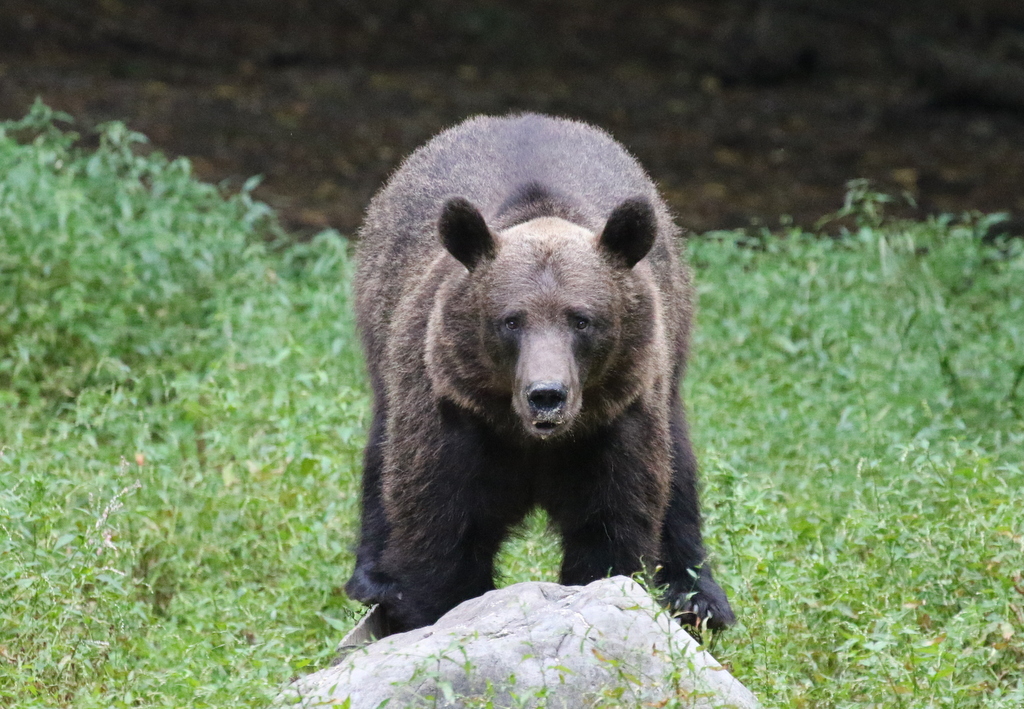
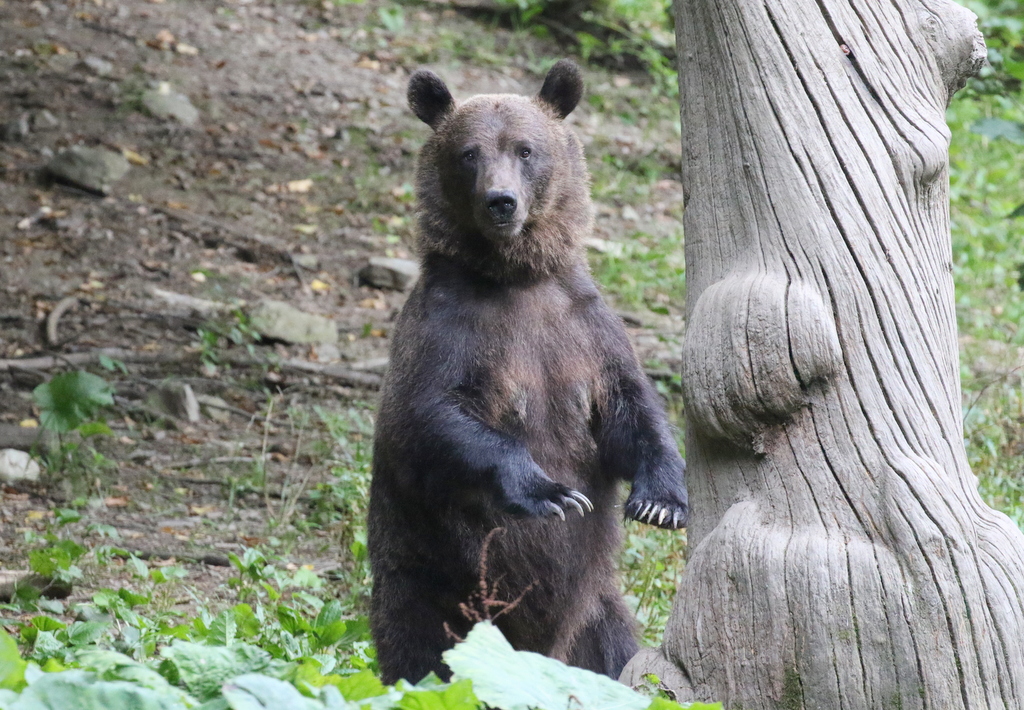
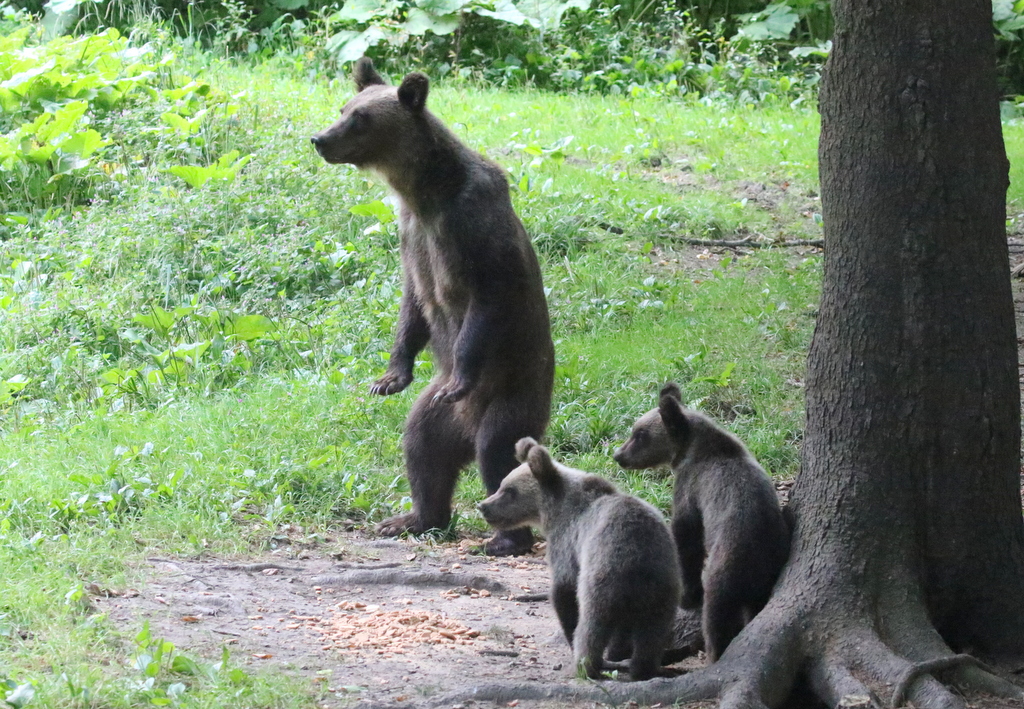
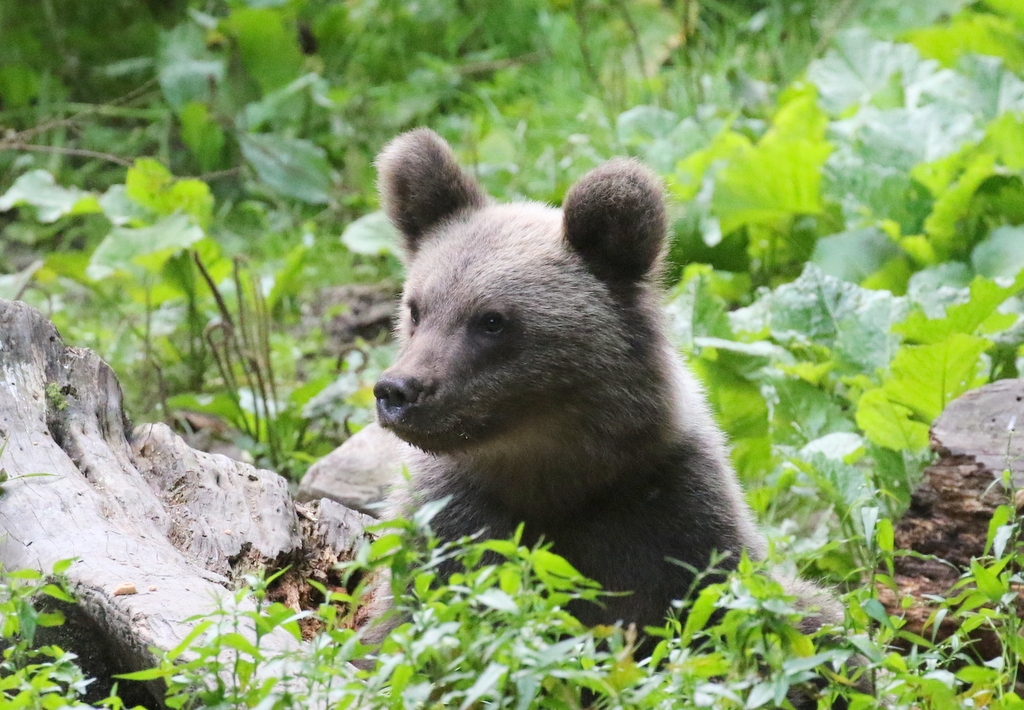
The woodpecker we were really hoping to see in the Carpathians was White-backed Woodpecker. The birds here are of the southern race, lilfordi, which differs from more northerly birds in having a barred rather than solid white back. After drawing a blank on our first morning, we had more success that afternoon, although not without a bit of effort.
We arrived at another site we knew to be good historically for White-backed Woodpecker. It was an area of extensive beech forest, with scattered spruce. Again, as we walked up the valley there seemed to be lots of logging activity and many of the largest trees had clearly been selectively removed. It was nice walk along the track through the trees, climbing to over 1000m. We saw lots of butterflies, a dark Steppe Buzzard and a Eurasian Sparrowhawk which was a new bird for our trip list, but apart from a couple of Great Spotted Woodpeckers at the start we came across no others woodpeckers.
After walking for over three hours, up the valley and back down again, we returned to the car. We were just getting in when we noticed a woodpecker flying towards us, down from the woods on the hills across the fields. It landed in some trees not far from the car and to our astonishment turned out to be the White-backed Woodpecker we had spent all afternoon searching for!
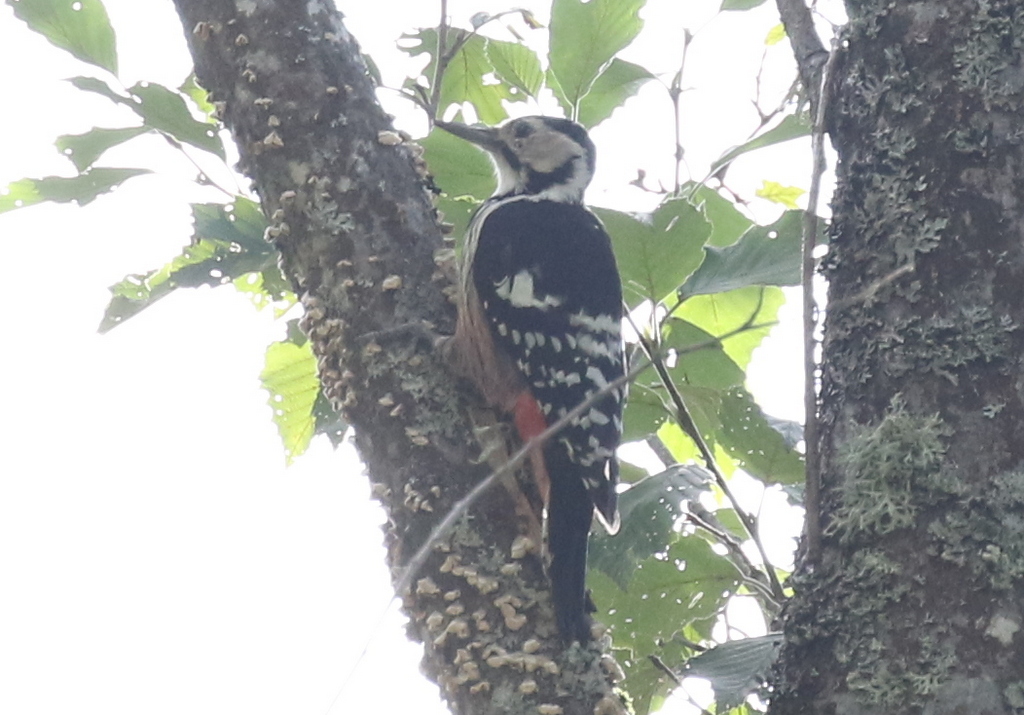
We also saw another White-backed Woodpecker at another site the following day. This is clearly still a good place to look for this often rather elusive subspecies.
Another subspecies we hoped to catch up with in the Carpathians was the distinctive SE European race of Horned Lark (or Shorelark), balcanica. These birds differ from the more familiar nominate northern race, which winters on the Norfolk coast, in having much more extensive black on the face. The black mask continues down to meet a more extensive black breast band. The southern races of Horned Lark are also high altitude birds, breeding on mountaintops and are non-migratory, in contrast to the northern Shorelarks we see more often. Perhaps potential candidates for a future split, based on any reappraisal of the Horned Lark / Shorelark complex?
We took a cable car up to 2000m, on the top of one of the ridges to an area of ski slopes, on our last morning. We had been told a good place to look for them and within a few hundred metres we were watching a group of about 15 balcanica Horned Larks. As well as several males, still sporting their black horns, there were good numbers of juveniles here too.

There were lots of Water Pipits up here too. Several Black Redstarts were feeding around the buildings and the ski slopes and we flushed groups of Linnets from the short vegetation.

We had hoped to find Alpine Accentor up here too, but there was possibly too much disturbance at this site. We were hoping to visit another site to look for this species in the afternoon, but when low cloud descended over the tops we were thwarted. We had also hoped to see Wallcreeper in the Carpathians, but we were too late this year. At the site close to where we were staying in Zarnesti, the birds had already finished breeding and had dispersed.
Other birds we did manage to find included Nutcrackers, which were fairly common in some areas in the spruce trees, as were Common Crossbills. In the deciduous forest, we saw another Collared Flycatcher and a few Spotted Flycatchers. Grey Wagtails were common along the mountain streams and around the open meadows lower down we saw Tree Pipits and Yellowhammers for the trip list.
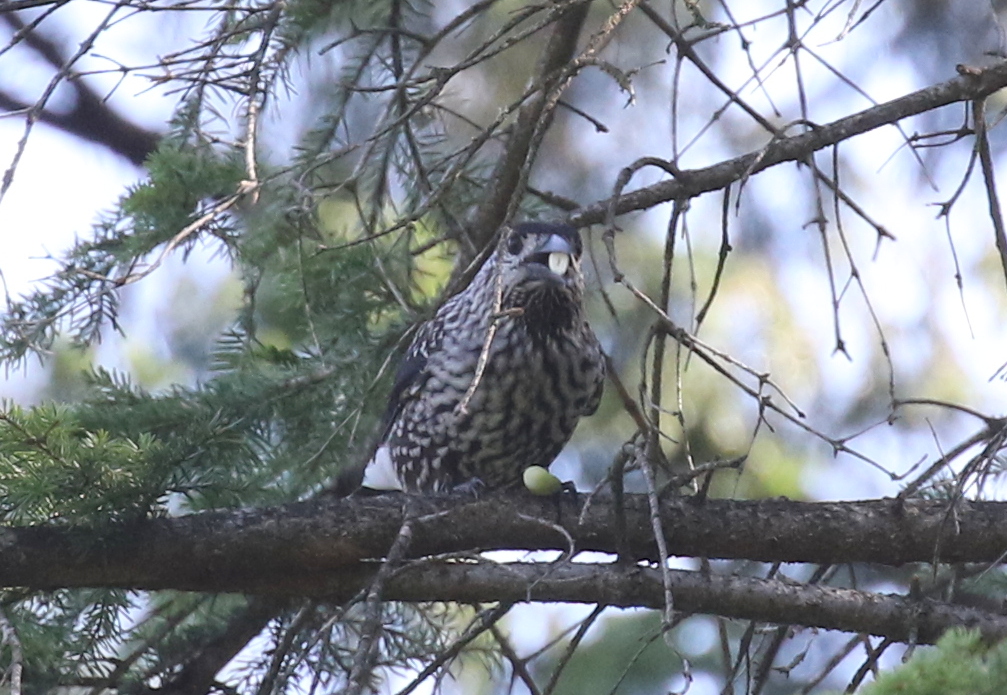
The scenery in the Carpathians is stunning, and our trip would not have been complete without taking some time to visit one or two of the Transylvanian castles. We spent a couple of hours one afternoon at the castle in Bran, which is generally referred to as Dracula’s Castle despite the fact there is no evidence that Vlad the Impaler ever visited there! Despite that, and the fact that it is overrun with tourists as a consequence, it was very pretty and well worth a visit.
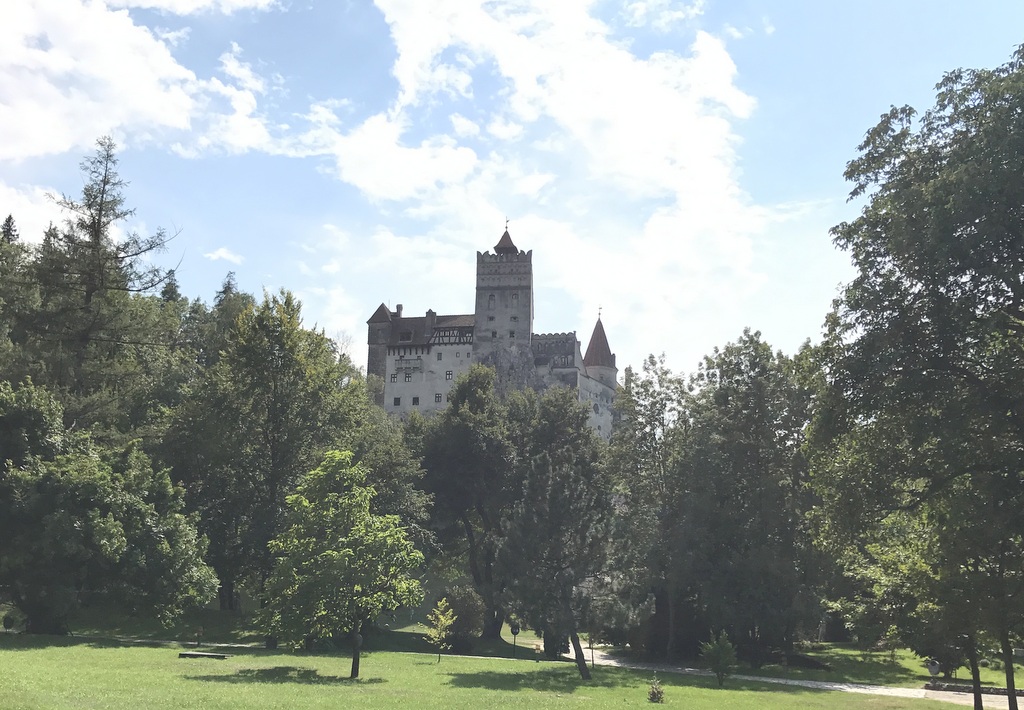
The best bird of our visit to Transylvania waited until the very last. We had been to check out the forests around one of the towns again and we were on our way back to our guest house at the end of our last afternoon. As we drove down the winding mountain road through the beech forest, my eagle-eyed travelling companion spotted a large shape on a branch deep in the trees. Fortunately there was a layby to turn round in just beyond and not much traffic.
As we drove slowly back up the road, we couldn’t see anything at first. There was only a stretch of a few metres long where the shape could be seen from the road and when we got to that point we could see it was a large owl – a Ural Owl!

We turned round again, higher up, and drove back down to the layby, where we parked and walked carefully up the edge of the road. The Ural Owl was unconcerned by our presence – it was dozing but several times it woke and looked round, particularly when a large lorry rumbled up the road behind us. It appeared to be yawning, opening its bright yellow bill wide and stretching its neck back on a few occasions, though it was possibly trying to regurgitate a pellet.
Ural Owls are obviously fairly common here still, but are not easy to see, particularly during the day. We sat at the edge of the road and watched it for a while, before eventually tearing ourselves away and leaving it to sleep in peace.
It was a great way to end what had been a fantastic trip to Romania. I am looking forward to going back next June already.
















